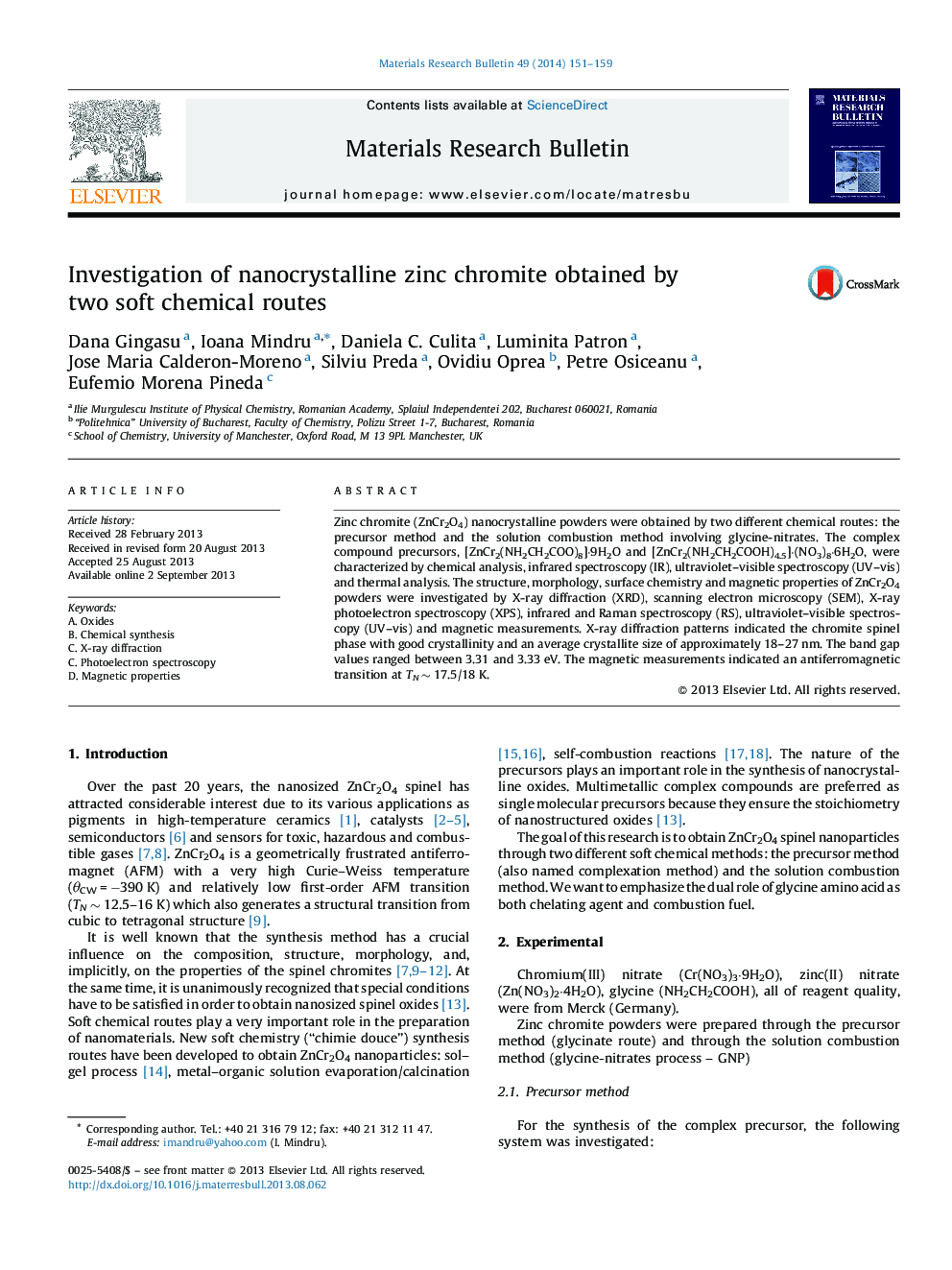| Article ID | Journal | Published Year | Pages | File Type |
|---|---|---|---|---|
| 1488595 | Materials Research Bulletin | 2014 | 9 Pages |
•Two soft chemical routes to synthesize zinc chromites are described.•Glycine is used as chelating agent (precursor method) and fuel (solution combustion method).•The synthesized chromites have crystallite size in the range of 18–27 nm.•An antiferromagnetic (AFM) transition is observed at about TN ∼ 18 K.
Zinc chromite (ZnCr2O4) nanocrystalline powders were obtained by two different chemical routes: the precursor method and the solution combustion method involving glycine-nitrates. The complex compound precursors, [ZnCr2(NH2CH2COO)8]·9H2O and [ZnCr2(NH2CH2COOH)4.5]·(NO3)8·6H2O, were characterized by chemical analysis, infrared spectroscopy (IR), ultraviolet–visible spectroscopy (UV–vis) and thermal analysis. The structure, morphology, surface chemistry and magnetic properties of ZnCr2O4 powders were investigated by X-ray diffraction (XRD), scanning electron microscopy (SEM), X-ray photoelectron spectroscopy (XPS), infrared and Raman spectroscopy (RS), ultraviolet–visible spectroscopy (UV–vis) and magnetic measurements. X-ray diffraction patterns indicated the chromite spinel phase with good crystallinity and an average crystallite size of approximately 18–27 nm. The band gap values ranged between 3.31 and 3.33 eV. The magnetic measurements indicated an antiferromagnetic transition at TN ∼ 17.5/18 K.
Graphical abstractFigure optionsDownload full-size imageDownload as PowerPoint slide
